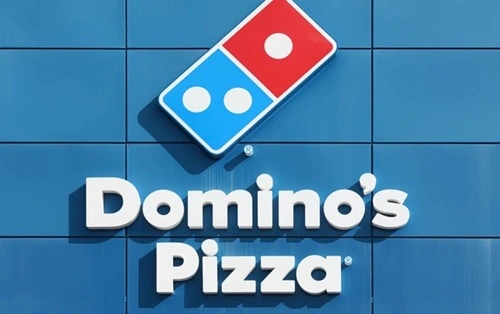Domino’s Pizza, founded in 1960, has grown to become the largest pizza delivery company globally. With over 18,000 locations in more than 90 countries, Domino’s has revolutionized the pizza industry through its focus on delivery and technology integration. As the global pizza market continues to evolve, Domino’s stands as a key player, adapting to changing consumer preferences and leveraging technology to enhance customer experience. This SWOT analysis explores the strengths, weaknesses, opportunities, and threats Domino’s faces in 2024, providing a comprehensive understanding of the company’s current position and future potential.

Current Overview of Domino’s Pizza:
Domino’s remains a leader in the quick-service restaurant (QSR) sector, particularly in pizza delivery. The company has capitalized on its technology-driven business model, with a large portion of its sales coming from digital platforms. Despite facing intense competition and evolving market dynamics, Domino’s continues to grow its revenue and expand globally. In 2024, Domino’s has focused on innovations such as AI-powered ordering systems and self-driving delivery vehicles, helping it stay ahead in the fast-changing landscape of food delivery.
Strengths:
1. Strong Brand Recognition: Domino’s is a household name with global recognition, thanks to its focus on quick delivery and consistent quality. The brand is associated with convenience and innovation in the pizza delivery space.
2. Technological Innovation: Domino’s has heavily invested in technology to streamline its operations. Innovations like the Pizza Tracker and AI-powered assistant Dom have enhanced the customer experience, allowing for real-time tracking and voice-activated orders.
3. Efficient Supply Chain: Domino’s has an integrated supply chain that allows for cost-effective production and timely deliveries. This enables the company to control quality and reduce costs, providing it with a competitive edge.
4. Global Reach: With over 18,000 locations in more than 90 countries, Domino’s benefits from a vast global footprint. This allows it to tap into diverse markets and ensure a steady revenue stream from multiple regions.
Weaknesses:
1. Dependence on Franchisees: Domino’s relies heavily on its franchise network, which can lead to inconsistent service quality. While this model allows for rapid expansion, it can be challenging to maintain uniform standards across all locations.
2. Limited Menu Options: Compared to some competitors, Domino’s has a narrower menu that focuses primarily on pizza. This could limit its appeal to customers who seek a more diverse range of food options.
3. Health Perceptions: Domino’s faces criticism for offering high-calorie, high-sodium menu items. With rising health consciousness among consumers, this could be a deterrent for some potential customers.
Opportunities:
1. Expansion into New Markets: There are untapped markets in regions like Asia and Africa where Domino’s can further expand. As demand for pizza continues to grow, particularly in developing countries, Domino’s can capitalize on this trend by opening more stores and increasing its global footprint.
2. Healthier Menu Options: With the increasing demand for healthier food, Domino’s can explore offering more nutritious menu items, such as low-calorie pizzas, plant-based options, and gluten-free alternatives, to attract health-conscious customers.
3. Partnerships and Collaborations: Domino’s could benefit from forming partnerships with beverage companies or integrating with smart home devices for seamless ordering. Strategic collaborations could expand its offerings and enhance customer convenience.
4. Leveraging Technology: As technology continues to evolve, Domino’s can further leverage AI, machine learning, and automation to improve customer experiences and enhance operational efficiency. This could include more personalized order recommendations or even drone deliveries.
Threats:
1. Intense Competition: The fast-food and pizza markets are highly competitive, with rivals like Pizza Hut, Papa John’s, and local chains constantly vying for market share. The rise of third-party delivery services like Uber Eats and DoorDash also poses a challenge to Domino’s delivery dominance.
2. Rising Costs of Ingredients: Fluctuations in the prices of key ingredients such as cheese, wheat, and meat can impact Domino’s profit margins. Additionally, rising labor costs in various markets can further strain profitability.
3. Changing Consumer Preferences: As consumers become more health-conscious and demand a wider variety of food options, Domino’s could lose customers if it fails to adapt quickly to these changing tastes.
4. Economic Downturns: Economic downturns or recessions can reduce consumer spending on discretionary items like pizza. This can result in lower sales as people opt for cheaper alternatives.
Domino’s Pizza Future Plans:
Looking ahead, Domino’s is focused on leveraging technology to further enhance its delivery and ordering systems. This includes the integration of AI and machine learning to personalize customer experiences and improve operational efficiency. Domino’s also plans to expand its global presence, particularly in emerging markets with high growth potential. Additionally, the company aims to introduce healthier menu options to cater to the growing demand for nutritious food choices. Sustainability is another focus, with Domino’s exploring eco-friendly packaging and energy-efficient operations.
Conclusion:
Domino’s Pizza remains a dominant force in the global pizza industry, backed by its strong brand, technological innovation, and efficient supply chain. However, it faces challenges from intense competition, changing consumer preferences, and reliance on franchisees. By capitalizing on opportunities such as global expansion, healthier menu options, and technological advancements, Domino’s is well-positioned to continue its growth in 2024 and beyond. As the company adapts to market trends and customer demands, it can maintain its leadership in the fast-food sector while navigating the evolving landscape.